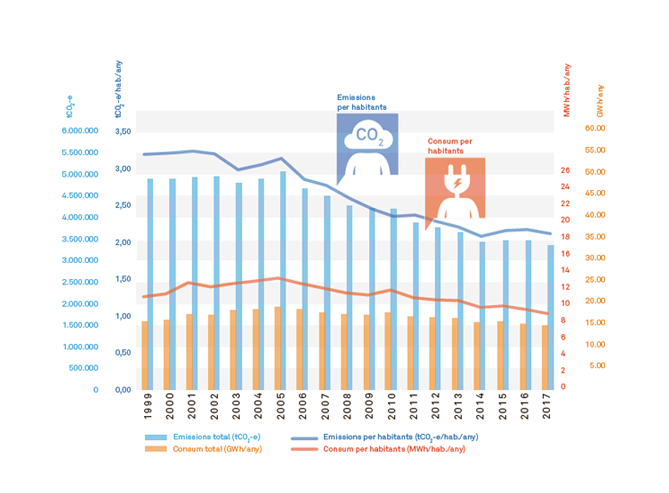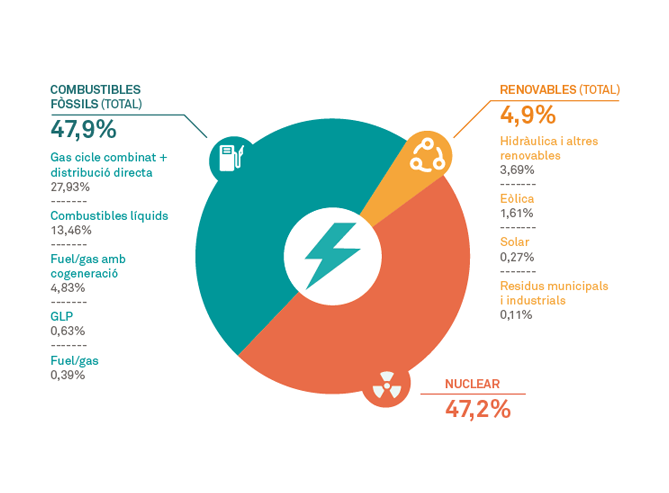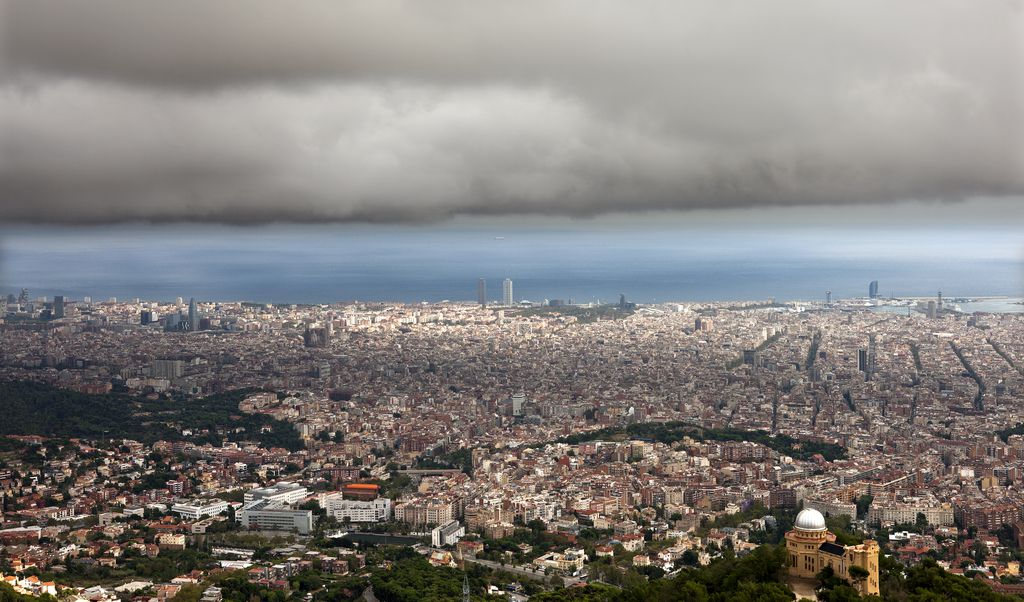
Barcelona is a city where, on a daily basis, many activities take place that have a clear impact on greenhouse gas emissions. Thanks to the decisive mitigation measures that the city has been implementing in recent years, CO2 emissions have gone down, particularly since 2005. However, these emissions need to be reduced much further and there is a need to promote renewable energy generation which currently accounts for just 5% of the primary energy consumed in the Catalan mix.
Greenhouse gas emissions related to human activity are mainly down to energy consumption (both generation and final consumption). Therefore, to reduce emissions of these gases, we need to change energy consumption habits across a wide variety of sectors such as transport, industry, commerce and services, households, large infrastructures and waste treatment. Monitoring the emissions caused by these sectors is key if we want to implement the most effective policies and measures for reducing emissions and minimising the effects of climate change.
CO2-e emissions by sector
In Barcelona city, energy consumed by the transport sector contributes the most to total emissions, at 27%, followed closely by the domestic and service sectors at 20.4% and 20.5%, respectively. Activity associated with the port and airport account for 13% of emissions, followed by urban solid waste treatment, at 10.5%, and industry, at 7.6%.
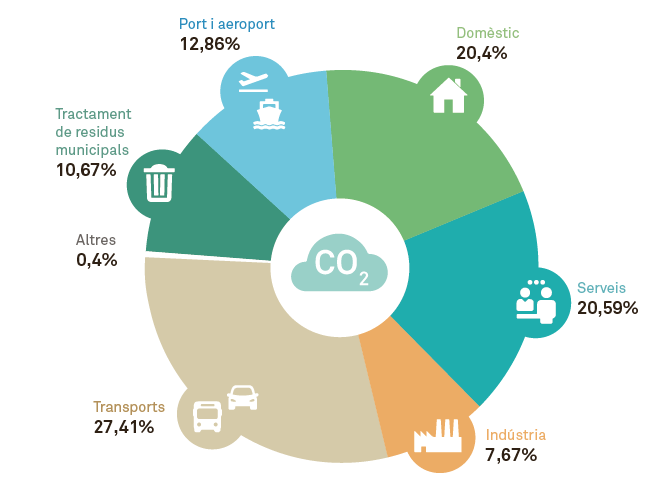
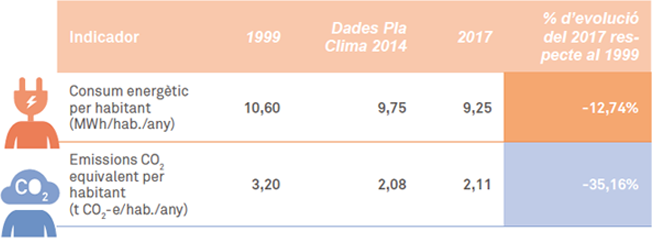
The latest energy data from Barcelona, for 2017, show final consumption of 14,995 GWh of energy, equivalent to an average of 9.25 MWh per inhabitant, which in terms of emissions is equivalent to the emission of 3,413,260 tonnes of CO2e, 2,11 tCO2-e-/inhabitant, taking into account the electricity mix in Catalonia. In both cases, there has been a reduction in the period 1999-2017, both in energy consumption (down 12.735%) and in derived emissions (35.16%), particularly since 2005, the year in which emissions and consumption reached their highest levels. In relation to 2005, GHG emissions have fallen by 32.80%.
The decoupling of economic growth and energy consumption is a key aim of the city’s energy and climate policy. It is a question of Barcelona’s energy intensity (which enables the increase in GDP to be measured against energy consumption), which fell from 261.64 Wh/€ in 1999 to 189.83 Wh/€ in 2017. This means the city has been able to consume less energy per euro generated and it seems that the trend is set to continue. This is good news.
In 2017, 402.59 GWh were generated using renewable sources and harnessing local residual energy. The main source of renewable and residual energy is the recovery of urban solid waste at the Sant Adrià de Besòs plant (54%) and thermal solar power (38%).
A decisive commitment needs to be made to using renewable energy, with a continued effort to improve efficiency and promote energy saving in all sectors.
